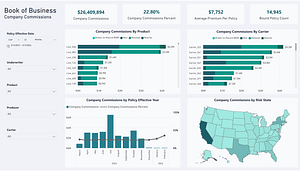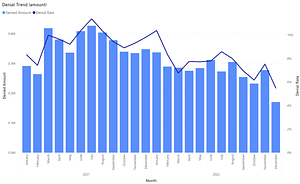Part 1: Start from a Data Driven Culture
This is the first in a series of posts about the oft -overlooked elements of successful BI. Why do some companies get so much out of their Analytics and Business Intelligence investments and others end up with a wretched pile of filth?
Anything that grows like Business Intelligence has grown for the past twenty years will beget its share of the disappointed and unimpressed to point out its failures. From its earliest days until the present, BI has made huge promises. Even if the practitioners and software companies didn’t promise the moon””and we frequently do””just seeing a demo of all that information presented in all of those amazing ways at breakneck speed carries an implicit promise that BI will make everything a lot better.
Business Intelligence and Analytics do make so many things much better. Tons better, but rarely as great as promised. Everyone who has asked the question has found that most BI projects fall short of their potential, and””depending on who’s asking””anywhere from 25% to well over half of them are outright failures.
Some organizations, however, get BI right. Those that do are rewarded with returns that justify all those promised moons.
Today’s attribute: Starting from a Data Driven Culture. I, like others in the BI world, reference Moneyball, the book by Michael Lewis and the movie with Brad Pitt, way too often. It’s because both the book and the movie truly illustrate the necessity of the data driven culture for allowing analytics to succeed.
For those of you who haven’t seen the movie or read the book, a quick excerpt from the Wikipedia synopsis of the book (don’t worry, no spoilers):
The central premise of Moneyball is that the collected wisdom of baseball insiders (including players, managers, coaches, scouts, and the front office) over the past century is subjective and often flawed. Statistics such as stolen bases, runs batted in, and batting average, typically used to gauge players, are relics of a 19th-century view of the game and the statistics that were available at the time. The book argues that the Oakland A’s’ front office took advantage of more analytical gauges of player performance to field a team that could compete successfully against richer competitors in Major League Baseball (MLB).
Rigorous statistical analysis had demonstrated that on-base percentage and slugging percentage are better indicators of offensive success, and the A’s became convinced that these qualities were cheaper to obtain on the open market than more historically valued qualities such as speed and contact. These observations often flew in the face of conventional baseball wisdom and the beliefs of many baseball scouts and executives.
The book and the movie are both great, by the way, and you don’t need to be a baseball fan or a numbers geek to enjoy them.
I’ll resist the temptation to go into a prolonged discussion about Moneyball. The relevant point is very simple: Analytics and BI, like all human endeavors, can only reach its potential when done with passion. If you want your BI project to succeed, it has to be done with passion.
Most people don’t have passion for analytics. Some would say the two words are antonyms. Those weird folks who absolutely love the stories that numbers tell””the vogue term for them these days is “data scientists”””are absolutely necessary for a BI project to be a resounding success.
These people don’t have to have degrees in statistics or math or even finance or engineering, though many do. They don’t need to be executives, in management, or have “analyst” in their title, though many do. They simply need to be the people who””like Brad Pitt’s character Billy Beane in Moneyball””appreciate the fact that numbers can provide insight that goes beyond what experience, intuition, intelligence, and “street smarts” can do alone.
Believe it or not, there are a lot of them out there, and they don’t all look and act like nerds. Some do. Your BI projects need to find them and place them in central roles on the team. Most don’t.
Finding those passionate about numbers to help champion the project is necessary. That is half of the battle. The other half? The organization must be one that actually listens to these people. Any organization can have a few analytical zealots. Some organizations marginalize these people, others listen to them””some going so far as to hang on their every word.
Of course this second ingredient is much more difficult to change than simply finding analytically passionate people. It is subtle, and it is ingrained into the culture. The most direct way””by no means foolproof””to get there is for a high-power member of the organization to drive it (again, like Billy Beane with the Oakland A’s in Moneyball).
The varieties of organizational dynamics that are in play are many, are varied, and are beyond the scope of this post. So the “how” is hard, but ignore the lesson at your own peril: companies that have analytically focused people involved in their BI project and have cultures that listen to them will get much more out of their efforts than companies that are missing those two ingredients. It can definitely be the difference between a project considered a failure vs. a success.







